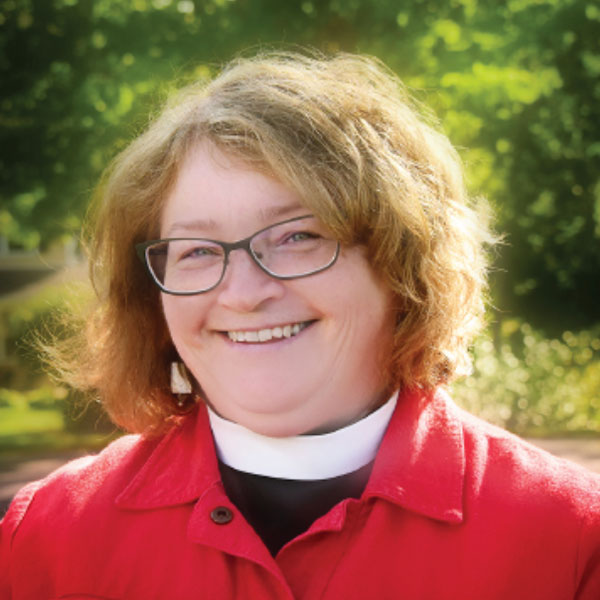August 6th marked the 30th anniversary of the apology offered by then-Primate Michael Peers to our Indigenous siblings in the Anglican Church of Canada.
While I’ve heard and read this apology before, in light of this significant anniversary and the recent death of Archbishop Peers, I felt compelled to read it again. You can find the full text here if you would like to read it yourself: https://www.anglican.ca/tr/apology/english/
While I have been struck in the past by Archbishop Peers’ unflinching honesty in offering this apology, this time I noticed something I hadn’t before – the way the apology begins:
Together here with you I have listened as you have told your stories of the residential schools.
I have heard the voices that have spoken of pain and hurt experienced in the schools, and of the scars which endure to this day.
I have felt shame and humiliation as I have heard of suffering inflicted by my people, and as I think of the part our church played in that suffering.1
“I have listened…I have heard…I have felt….”
Whether stated as openly as this or not, this is how a good apology begins: with a willingness to listen and an openness to be affected by what you are hearing. In the words that follow in the apology outlining specific actions taken by the Church and its leaders and the harms that resulted, it’s clear that Archbishop Peers was listening to Indigenous people. He heard their pain. He felt remorse at what the Church had done. And he committed both himself and the Church to reconciliation and action (or, as some would say, Reconcili-action).

As I was reflecting on this, I recalled another apology to Indigenous people, this one offered in St. John’s, NL, in September of 2000 by religious leaders in the Anglican, Presbyterian, Roman Catholic, and United Churches in Newfoundland and Labrador. As one of the organizers explained to a reporter from The Globe and Mail: “the churches wanted to acknowledge the suffering of Aboriginal people in the 500 years since Europeans arrived to settle what is now Newfoundland and Labrador.”2
I was present for that gathering, and I recall the response by the President of the Innu nation, Peter Penashue, who refused to accept the apology, as well-intentioned as it was. He asked whether church leaders knew what they were apologizing for and invited them to listen to the stories of Indigenous people before offering a broad apology. He wanted them to hear firsthand how Indigenous people had been impacted by what the churches had done, and he wanted the churches to acknowledge the specific harms done. Since then, I know there has been a lot of listening, and that has resulted in concrete actions to redress the wrongs committed by the Church.
The willingness to listen, to hear someone tell their story, is a key step in the journey as we travel with them along the path towards reconciliation. The importance of that for the person telling their story becomes clear in The Book of Forgiving: The Fourfold Path for Healing Ourselves and Our World, written by Archbishop Desmond Tutu and his daughter, Mpho Tutu. Reflecting on stories they heard during the work of the Truth and Reconciliation Commission in South Africa, and others, they write: “Telling the story is how we get our dignity back after we have been harmed. It is how we begin to take back what was taken from us, and how we begin to understand and make meaning out of our hurting.”3
There are plenty of opportunities for each of us to hear the stories of our Indigenous people. I encourage you to visit a Native Friendship Centre or one of the many Indigenous communities in Nova Scotia or on Prince Edward Island. Attend a Pow Wow. If you’re in or near Nova Scotia, visit the site of the former Shubenacadie Residential School. Read a book, an article, or a poem by an Indigenous author, or the summary and 94 Calls to Action in the Truth and Reconciliation Commission’s final report. Support Indigenous-owned businesses, some of which also sell crafts and products made by Indigenous people (including orange shirts) and strike up a conversation. Visit Indigenous PEI, a new store at 111 Grafton St., Charlottetown, selling crafts, artwork and clothing created by Indigenous people (including orange shirts and sweatshirts). Wear an orange shirt on September 30th, the National Day for Truth and Reconciliation in Canada, and read the story about how this day came to be.
I hope we will continue to build on the legacy of Archbishop Michael Peers and so many others before and after him who have challenged us to listen to the stories of our indigenous people, to hear their pain and struggles, their joys and their hopes, to repent for the actions of the past, and to change our attitudes and behaviours in the present. May we be guided by the deep spiritual wisdom and practical knowledge of our Indigenous elders as we seek to better care for creation and all its creatures. As we journey on the path towards reconciliation, may it lead to reconcili-action. May we walk in a good way with all our relations and with our Creator, recognizing that we all members of one family, rooted and grounded in love, and united in Christ.
- A message from the Primate, Archbishop Michael Peers, to the National Native Convocation, Minaki, Ontario, Friday, August 6, 1993. Source: https://www.anglican.ca/tr/apology/english/
- https://www.theglobeandmail.com/news/national/newfoundland-natives-get-church-apology/article18425688/
- The Book of Forgiving: The Fourfold Path for Healing Ourselves and Our World, Desmond Tutu and Mpho Tutu, HarperCollins, 2014, p. 71
Note: In Mi’kmaq talking circles, an eagle feather or other symbol may be passed from person to person. Only the person holding the feather speaks, while the others listen. Everyone has an opportunity to speak, to be heard, and to listen.



